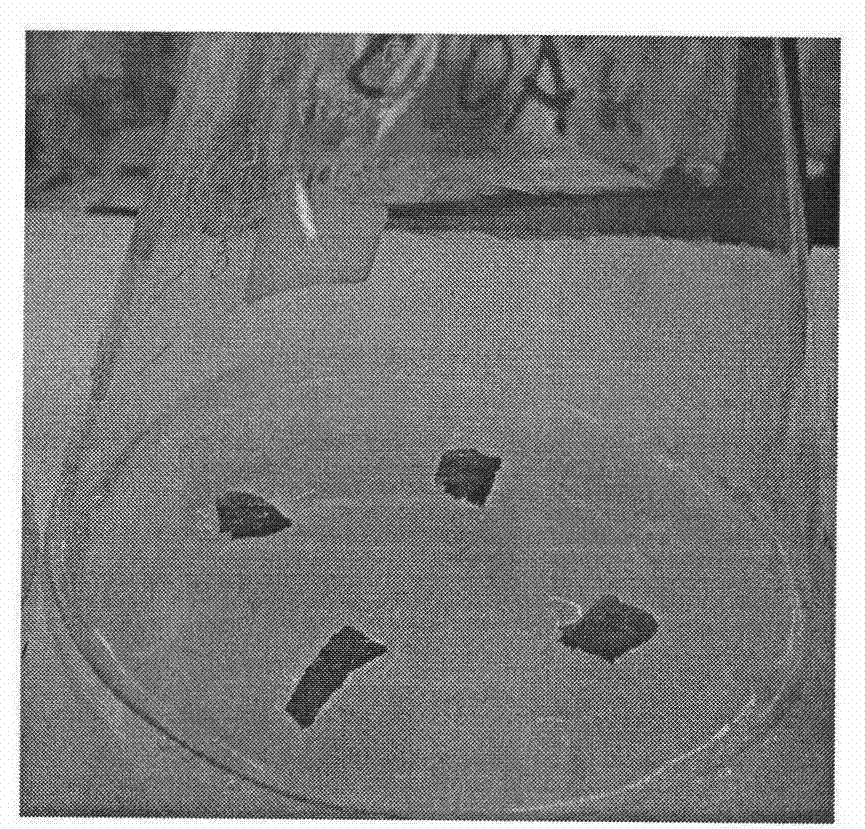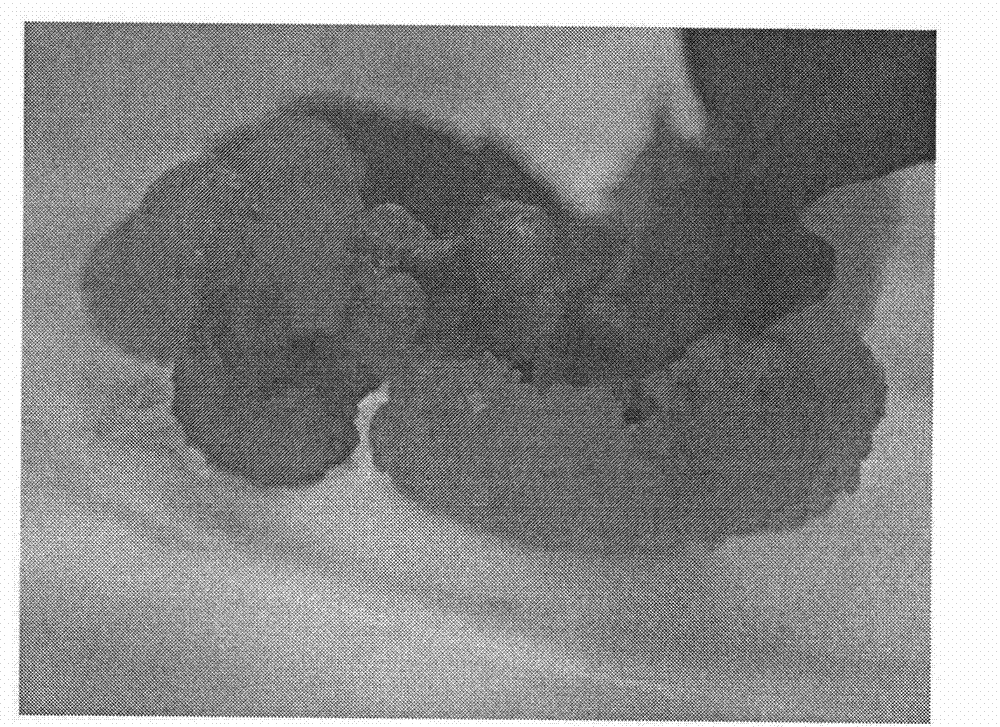Method for high-efficiency cyclic regeneration of blackberry tissue culture seedling leaves
A technology of cyclic regeneration and tissue culture seedlings, which is applied in the field of plant tissue culture, and can solve problems such as the one-way one-round regeneration method
- Summary
- Abstract
- Description
- Claims
- Application Information
AI Technical Summary
Problems solved by technology
Method used
Image
Examples
Embodiment 1
[0042] Inducing Adventitious Buds from Stem Sections of Field Plants
[0043] Use the semi-lignified stems of "Kiowa" annual branches as explants, soak and rinse with concentrated laundry detergent, soak in 70% alcohol by volume for 45 seconds, rinse with sterile water for 3 to 5 times, and then rinse with 0.1% Soak in mercuric acid for 8 minutes; then cut the explants into (1.0-1.5) cm long bud stem segments, inoculate in MS+6-BA0.3mg / L+ZT0.5mg / L+sucrose 25g / L+agar 5.6g / L, on the culture medium of pH value 6.0, and at (25 ± 3) ℃, illuminance 2500lx, cultivate under the condition of illumination time 12h / d, the induction rate of adventitious buds after 30d is more than 85%, and each stem segment can produce 2 ~4 adventitious buds.
Embodiment 2
[0045] In Vitro Regeneration of Blackberry Tissue Cultured Leaves into Whole Plants
[0046] When the tissue culture seedling grows to more than 3 leaves, select the leaves with the longest side × the widest side being more than 0.5cm × 0.5cm, remove the edges, and trim them into leaf pieces of about 0.5cm × 0.5cm in size; Adhere to MS+TDZ 0.75mg / L+sucrose 25g / L+agar 5.6g / L, pH 6.2 culture medium, culture at (25±3)°C for 14 days in the dark, the edge of the leaf begins to curl Swell to produce a small amount of callus granules, then transfer to 1500 lx of light intensity, under the condition of 12 h / d of light time, after culturing for 20 days, light yellow and dense callus are formed, and the callus induction rate is 100%;
[0047] Remove the callus, cut into (0.3~0.6)cm×(0.3~0.6)cm blocks, inoculate into MS+6-BA1.0mg / L+IAA0.2mg / L+sucrose 30g / L+agar 5.6g / L, on the culture medium of pH value 5.8, cultivate under the conditions of (25±3)°C, 2000lx, light time 12h / d, the diffe...
PUM
 Login to View More
Login to View More Abstract
Description
Claims
Application Information
 Login to View More
Login to View More - R&D
- Intellectual Property
- Life Sciences
- Materials
- Tech Scout
- Unparalleled Data Quality
- Higher Quality Content
- 60% Fewer Hallucinations
Browse by: Latest US Patents, China's latest patents, Technical Efficacy Thesaurus, Application Domain, Technology Topic, Popular Technical Reports.
© 2025 PatSnap. All rights reserved.Legal|Privacy policy|Modern Slavery Act Transparency Statement|Sitemap|About US| Contact US: help@patsnap.com



